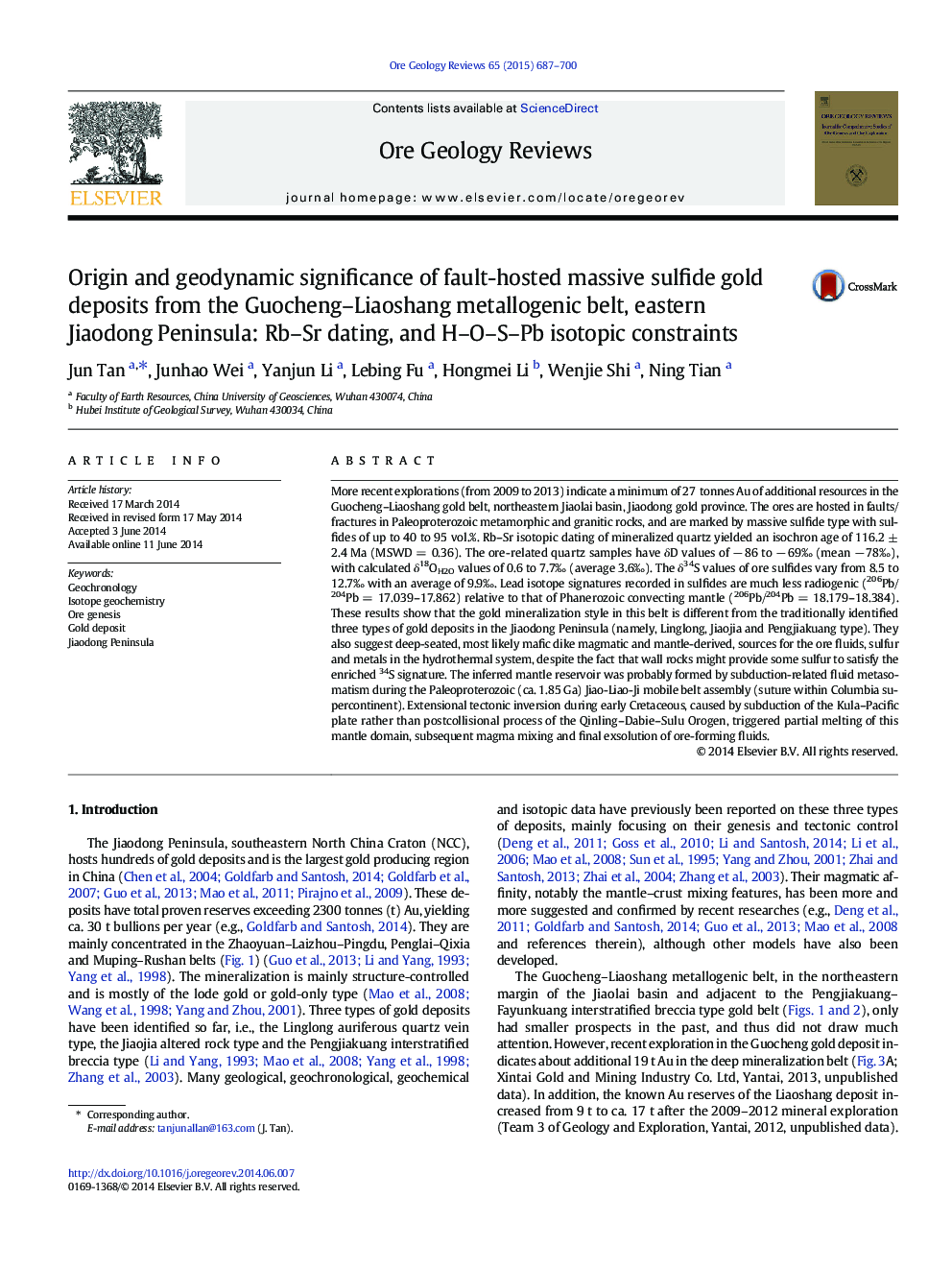| کد مقاله | کد نشریه | سال انتشار | مقاله انگلیسی | نسخه تمام متن |
|---|---|---|---|---|
| 4697285 | 1351869 | 2015 | 14 صفحه PDF | دانلود رایگان |

• Fault-hosted massive sulfide gold deposits—a new category in the Jiaodong Peninsula
• Ore fluids were derived from a mafic dike magmatic and metasomatized SCLM source.
• Mantle reservoir for Au was formed during the Columbia supercontinent assembly.
• Extensional regime for mineralization was linked to the Pacific plate subduction.
More recent explorations (from 2009 to 2013) indicate a minimum of 27 tonnes Au of additional resources in the Guocheng–Liaoshang gold belt, northeastern Jiaolai basin, Jiaodong gold province. The ores are hosted in faults/fractures in Paleoproterozoic metamorphic and granitic rocks, and are marked by massive sulfide type with sulfides of up to 40 to 95 vol.%. Rb–Sr isotopic dating of mineralized quartz yielded an isochron age of 116.2 ± 2.4 Ma (MSWD = 0.36). The ore-related quartz samples have δD values of − 86 to − 69‰ (mean − 78‰), with calculated δ18OH2O values of 0.6 to 7.7‰ (average 3.6‰). The δ34S values of ore sulfides vary from 8.5 to 12.7‰ with an average of 9.9‰. Lead isotope signatures recorded in sulfides are much less radiogenic (206Pb/204Pb = 17.039–17.862) relative to that of Phanerozoic convecting mantle (206Pb/204Pb = 18.179–18.384). These results show that the gold mineralization style in this belt is different from the traditionally identified three types of gold deposits in the Jiaodong Peninsula (namely, Linglong, Jiaojia and Pengjiakuang type). They also suggest deep-seated, most likely mafic dike magmatic and mantle-derived, sources for the ore fluids, sulfur and metals in the hydrothermal system, despite the fact that wall rocks might provide some sulfur to satisfy the enriched 34S signature. The inferred mantle reservoir was probably formed by subduction-related fluid metasomatism during the Paleoproterozoic (ca. 1.85 Ga) Jiao-Liao-Ji mobile belt assembly (suture within Columbia supercontinent). Extensional tectonic inversion during early Cretaceous, caused by subduction of the Kula–Pacific plate rather than postcollisional process of the Qinling–Dabie–Sulu Orogen, triggered partial melting of this mantle domain, subsequent magma mixing and final exsolution of ore-forming fluids.
Journal: Ore Geology Reviews - Volume 65, Part 3, March 2015, Pages 687–700